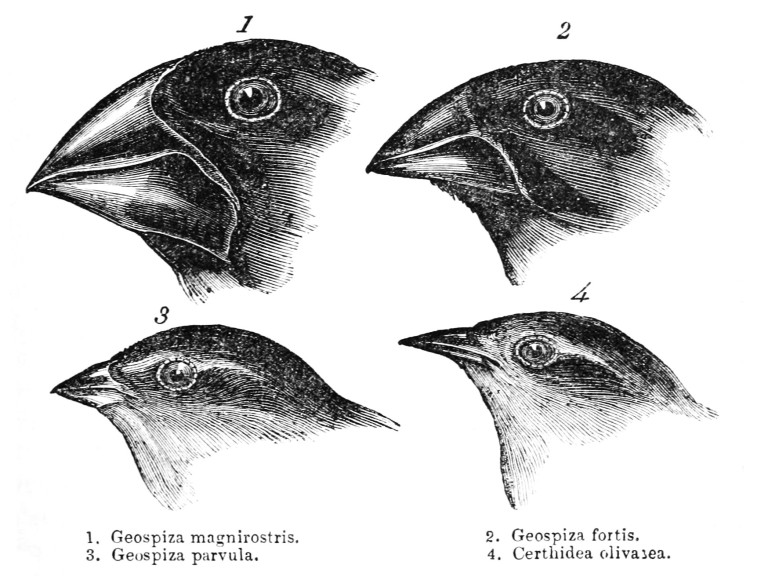A Species is often defined as the largest group of organisms where two individuals are capable of reproducing fertile offspring, typically using sexual reproduction.
Species Complex is a group of closely related species that are very similar in appearance to the point that the boundaries between them are often unclear. Differentiating measures include similarity of DNA, morphology, or ecological niche.
Speciation is the evolutionary process by which reproductively isolated biological populations evolve to become distinct species.
Adaptive radiation is a process in which organisms diversify rapidly into a multitude of new forms, particularly when a change in the environment makes new resources available, creates new challenges, or opens new environmental niches.
The Galapagos finches are the birds Charles Darwin collected, initially thinking they were a diverse collection of unrelated birds. Ultimately they were his “Newton’s apple”. He came to realize they were varieties of a common kind. Their beaks were wildly different, each adapted to its own ecological strategy. He wrote: ““Seeing this gradation and diversity of structure in one small, intimately related group of birds, one might really fancy that from an original paucity of birds in this archipelago, one species had been taken and modified for different ends”.
There are now at least 13 species of finches on the Galapagos Islands, each filling a different niche on different islands. This is an example of speciation through adaptive radiation. They would also be considered a species complex because there’s a good amount of genetic give and take between species resulting in gray areas for identification.
I hope you were all taking notes, this may be on the test. Bits of text on this page were lazily pasted from Wikipedia.
